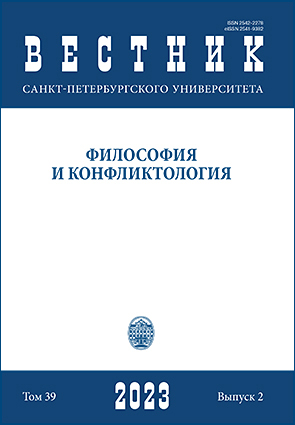Internet of Behavior: Types, models, principles
DOI:
https://doi.org/10.21638/spbu17.2023.212Abstract
This article presents a general view and conceptualization of the Internet of Behavior from a social science perspective. The Internet of Behavior (IoB) is defined as a technology for machine monitoring, recognizing, and responding to human behavior (including emotion expression and biometrics). Based on the analysis of a typical case in higher education, the article forms the conceptual outline of social research on IoB by highlighting the types, possible models, and principles of IoB implementation. The study identifies three models of IoB: binary (based on checking the compliance of an individual’s behavior with the norm and his or her identification), medical (based on determining the physiological causes of certain human actions), and social (focused on identifying the features of human social behavior in addressing professional or other public problems). Monitoring, summarizing, and evaluating students’ social behavior potentially allows the implementation of new models of interaction between universities, employers, and students, based on the digitization and monetization of student engagement in learning and the responsibility of universities for the demand for graduates. The implementation of these models will lead to a profound transformation of higher education, including the digital servitization of education, the reduction of the established gap between knowledge and the social interactions associated with the generation, translation, and assimilation of this knowledge, and the inclusion of individual social behavior associated with professional knowledge in the list of those aspects of society that are subject to digitization and monetization. The basic principles of social IoB, without observance of which this technology can lead to anti-human consequences, are defined: privacy, multivalency of interpretation, continuity, relevance, and reflexivity.
Keywords:
Internet of Behavior, digitalization, digital transformation, digital servitization, privacy, education
Downloads
References
Downloads
Published
How to Cite
Issue
Section
License
Articles of "Vestnik of Saint Petersburg University. Philosophy and Conflict Studies" are open access distributed under the terms of the License Agreement with Saint Petersburg State University, which permits to the authors unrestricted distribution and self-archiving free of charge.






